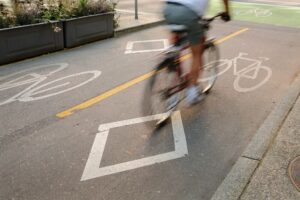
In today’s fast-paced world, effective communication on the road is more crucial than ever. While modern vehicles are equipped with some of the most advanced systems available, there are times when traditional hand signals are the most reliable method for showing the driver’s intent.
Police officers, drivers, cyclists and even pedestrians must rely on some universally understood hand gestures to safely manage and navigate traffic flow. Some are standard; others are unofficial but common among road participants.
Standard Officer Hand Signals
There may be times when the usual traffic signs and traffic lights can’t handle traffic safely and efficiently. The traffic lights may have failed for some reason, or the traffic may need to be diverted around an accident or construction area. In such situations, a traffic officer may be posted to control the traffic flow. The officer will use a set of hand signals to direct drivers. These hand signals are essential, and all drivers must memorize them. Each signal is designed to be easily understood in various traffic conditions, so you won’t have to learn an entirely different language to figure out what it means.
1. Stop
An officer will extend their arm forward with their hand open and palm facing outward to signal a vehicle to stop. This universal gesture knows no language barriers, and it is effective even in poor visibility conditions.
2. Go
To signal a stopped vehicle to get moving, an officer extends their arm with the palm facing down. Then, they bend their elbow, bringing the palm in a circular motion around the chin. This signal is often seen in intersections and work zones where the normal traffic flow is disrupted, but it is also used when regular traffic lights are not operational.
3. Directional Indication
To point out a direction, an officer may point in the desired direction with an extended arm. This signal can also be used with “Go”, indicating drivers to start moving in a specific direction.
4. Slowing Traffic
To slow down traffic, an officer will extend their arm with their palm facing downward. From this position, the hand moves up and down, creating a signal that tells incoming traffic to reduce speed. You will often encounter this signal in areas with high pedestrian activity.
5. Pull Over
To instruct a driver to pull over, an officer extends their arm at an angle towards the road and uses their fingers to motion the vehicle towards the curb. This signal is clear and directs the driver to move to the side of the road safely.
6. Proceed With Caution
When traffic needs to proceed with caution, an officer may use a slow hand wave with the palm facing the driver. This indicates that the driver should proceed but remain alert to the dangers ahead.
Standard Driver Hand Signals
Normally, you use your vehicle’s turn signal lights to indicate your intention to turn or change lanes, and you rely on your vehicle’s brake (stop) lights to indicate your intention to slow down or stop. However, if your vehicle’s indicators aren’t working, use these official hand signals to indicate your intentions to other drivers. All drivers must know what these signals mean and how to do them.
1. Left Turn
To indicate a left turn, hold your left arm horizontal and pointing left outside your vehicle.
2. Right Turn
To indicate a right turn, point your left arm upwards at a 90-degree angle outside your vehicle.
3. Slow or Stop
To indicate your intention to slow or stop, point your left arm downwards at a 90-degree angle outside your vehicle. Do it slowly, as drivers behind you may react slower since they won’t expect such a signal.
4. Right Turn (Cyclists Only)
Cyclists may use these same three hand signals. In addition, they may hold their right arm horizontal and pointing right beyond their bicycle as an alternative way to signal their intention to turn right.
Unofficial Hand Signals
In traffic, all drivers follow the same rules and laws that apply to everyone. That’s how they can figure out who has the right of way in an intersection without even speaking to each other. Although direct communication is optional, it can be useful in some situations.
Drivers created these unofficial hand signals, and although you are not required to know them, they have been widely adopted in many countries, including Canada.
1. Signal an Emergency
When you see a car struggling with a mechanical problem, there’s a high chance that its driver might be unaware of the situation. Signal them to pull over by pointing to the area of the problem and giving them a thumbs-down.
2. Problems With Their Lights
Whether you notice a broken blinker, inactive headlights or malfunctioning stoplights on a car, you can signal its driver by repeatedly opening and closing your hand.
3. Apology
We all make mistakes every now and then, even in traffic. When that happens, you can apologize to a driver by making a “V” shape with your index and middle finger, similar to the peace sign. Others prefer to raise their palm, which is a polite way to show that you didn’t mean harm.




